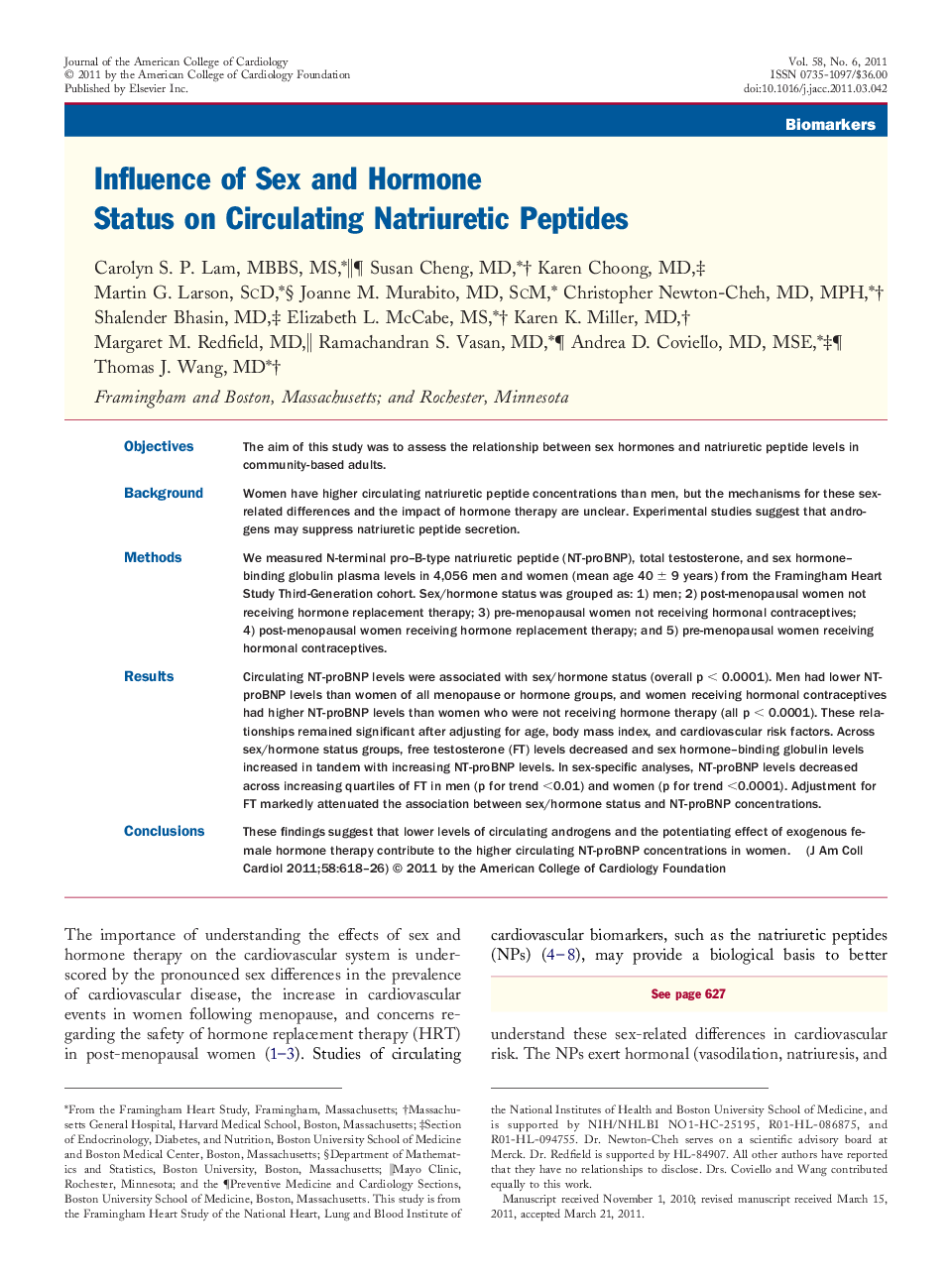| کد مقاله | کد نشریه | سال انتشار | مقاله انگلیسی | نسخه تمام متن |
|---|---|---|---|---|
| 2949751 | 1577253 | 2011 | 9 صفحه PDF | دانلود رایگان |

ObjectivesThe aim of this study was to assess the relationship between sex hormones and natriuretic peptide levels in community-based adults.BackgroundWomen have higher circulating natriuretic peptide concentrations than men, but the mechanisms for these sex-related differences and the impact of hormone therapy are unclear. Experimental studies suggest that androgens may suppress natriuretic peptide secretion.MethodsWe measured N-terminal pro–B-type natriuretic peptide (NT-proBNP), total testosterone, and sex hormone–binding globulin plasma levels in 4,056 men and women (mean age 40 ± 9 years) from the Framingham Heart Study Third-Generation cohort. Sex/hormone status was grouped as: 1) men; 2) post-menopausal women not receiving hormone replacement therapy; 3) pre-menopausal women not receiving hormonal contraceptives; 4) post-menopausal women receiving hormone replacement therapy; and 5) pre-menopausal women receiving hormonal contraceptives.ResultsCirculating NT-proBNP levels were associated with sex/hormone status (overall p < 0.0001). Men had lower NT-proBNP levels than women of all menopause or hormone groups, and women receiving hormonal contraceptives had higher NT-proBNP levels than women who were not receiving hormone therapy (all p < 0.0001). These relationships remained significant after adjusting for age, body mass index, and cardiovascular risk factors. Across sex/hormone status groups, free testosterone (FT) levels decreased and sex hormone–binding globulin levels increased in tandem with increasing NT-proBNP levels. In sex-specific analyses, NT-proBNP levels decreased across increasing quartiles of FT in men (p for trend <0.01) and women (p for trend <0.0001). Adjustment for FT markedly attenuated the association between sex/hormone status and NT-proBNP concentrations.ConclusionsThese findings suggest that lower levels of circulating androgens and the potentiating effect of exogenous female hormone therapy contribute to the higher circulating NT-proBNP concentrations in women.
Journal: Journal of the American College of Cardiology - Volume 58, Issue 6, 2 August 2011, Pages 618–626